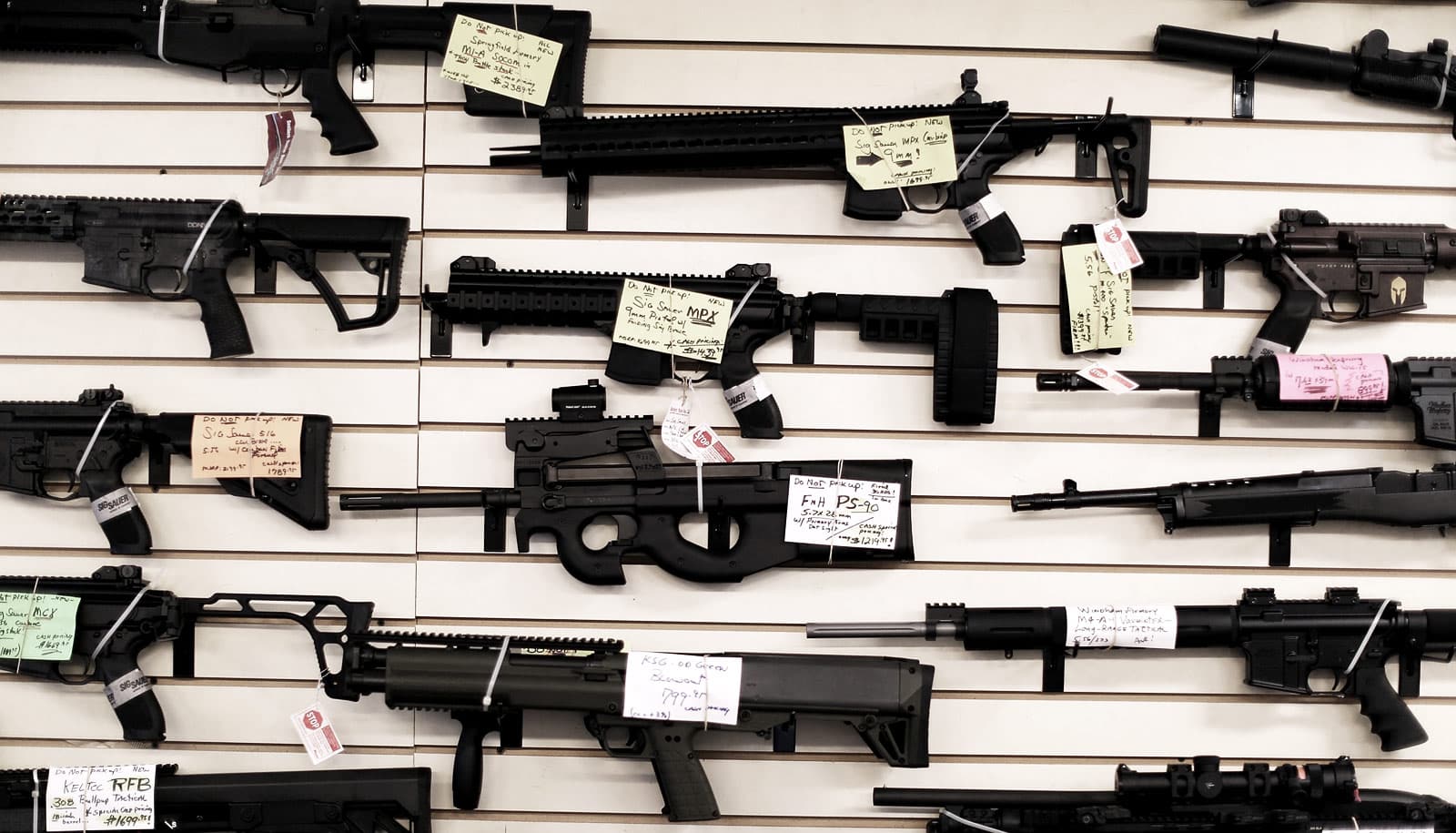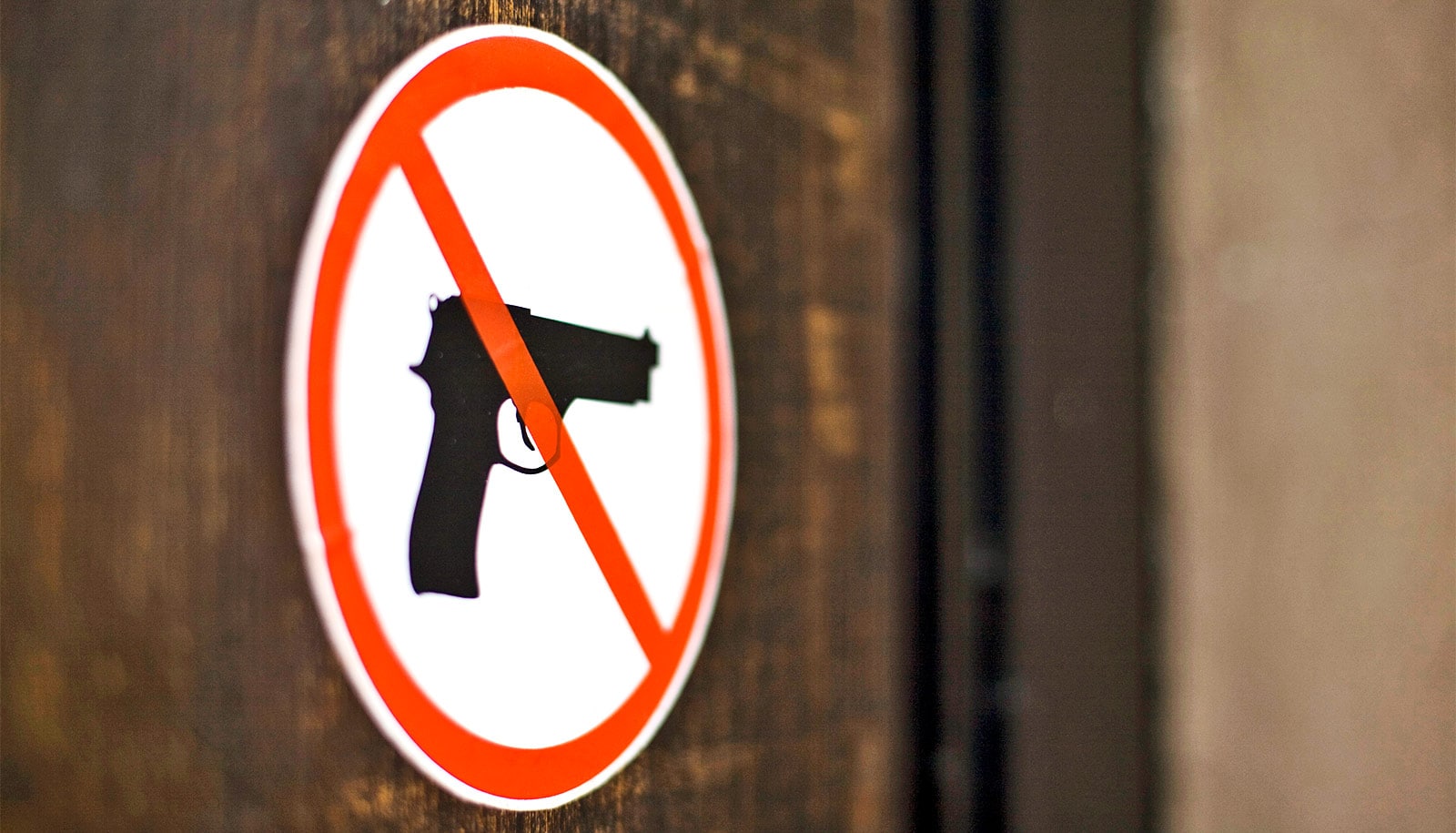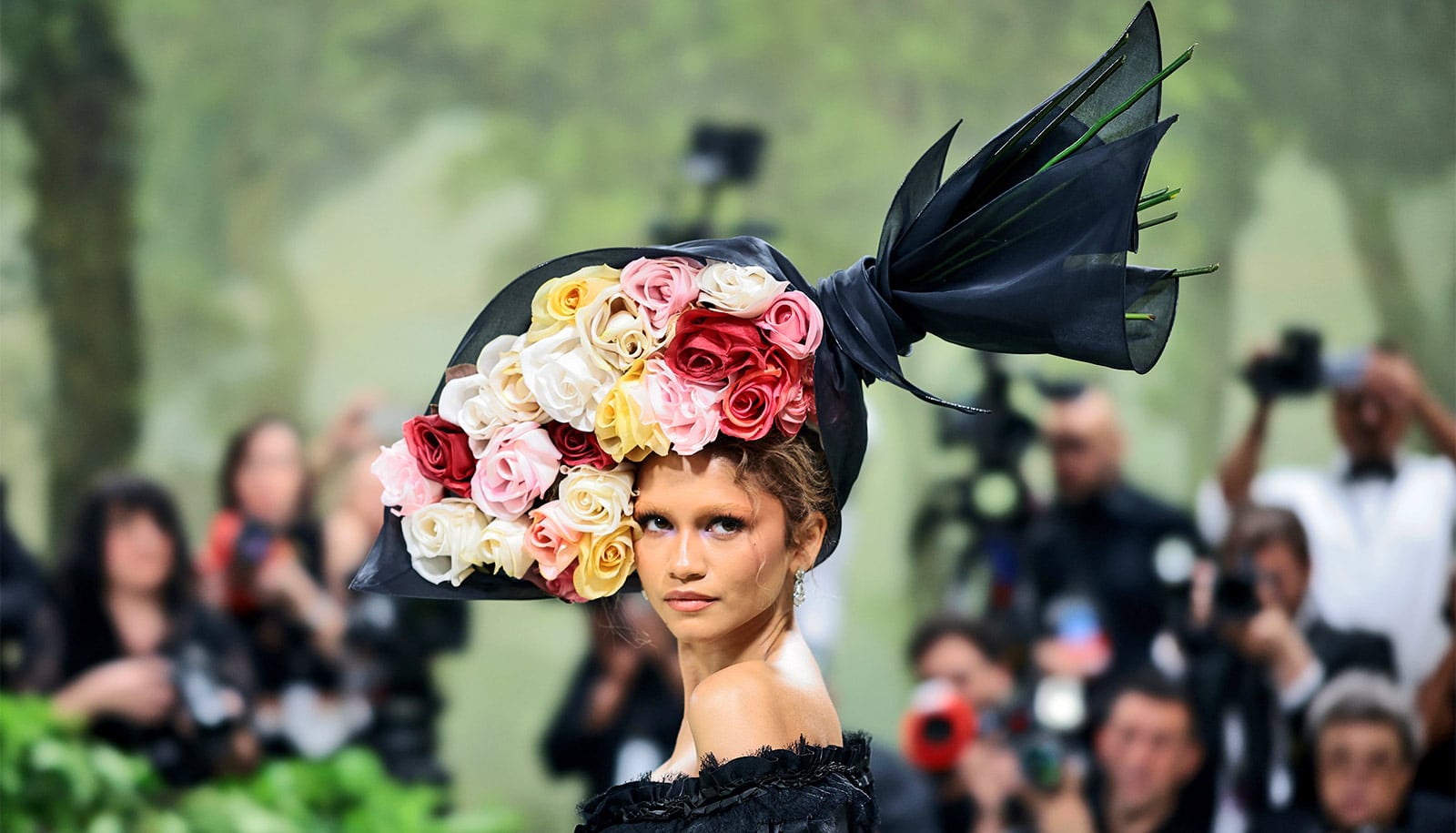The debate surrounding gun rights and gun control—central to American political discourse—reignited October 1 when a gunman opened fire on thousands of people attending an outdoor concert in Las Vegas, killing 58 and injuring nearly 600 in the deadliest mass shooting in US history.
The debate has no easy answers, says Jennifer Carlson, an assistant professor in the University of Arizona’s School of Sociology and School of Government and Public Policy and author of Citizen-Protectors: The Everyday Politics of Guns in an Age of Decline (Oxford University Press, 2015).
“…the more we can get Americans talking…and the more we can inform Americans on the complexities of gun policy in this country, the better.”
“From the technicalities of guns themselves as mechanical objects, to the ways in which case law has enshrined certain doctrines related to self-defense, it is exceedingly difficult to wrap one’s head around everything,” Carlson says. “To paraphrase one California police chief I interviewed, you practically need a law degree to understand the intricacies in which local, state, and federal laws interface with the administrative bodies that are in charge of enforcing them.
“In my view, the more we can get Americans talking across this experiential divide and the more we can inform Americans on the complexities of gun policy in this country, the better.”
Here, Carlson discusses the ways in which American gun culture, policing, and public law enforcement intersect along the lines of race, gender, and socioeconomics:
How does the conversation surrounding guns in the US differ from similar conversations in other countries?
There are many ways to slice and dice the uniqueness of American gun politics: the distinct relationship that Americans have with their government (especially the pervasiveness of anti-statist sentiment); the unique, oftentimes deadly, racial politics of America, which indelibly mark the social life of guns in America in expected and unexpected ways; the politics of crime in the US (especially the ascendance of mass incarceration as a political project in the second half of the 21st century); and the strength of cultural and political conservatism in the US.
But for the sake of simplicity, I’ll say that perhaps the most distinctive difference is the sheer number of guns in the US. Advocates for stricter gun control often point to Australia, the United Kingdom, or Canada as models for gun policy, but not one of these countries has ever come close to the sheer ubiquity of guns in the US. Americans are believed to possess more than 300 million guns, and almost 70 percent of Americans have fired a gun at some point in their lives.
What roles do gender and race play in these conversations?
Too often, our conversations about guns fail to account for the complex ways that gender and race shape how Americans relate to guns and the gun debate.
This often means silencing the vantage points of Americans—including racial minorities, women, members of the LGBTQ community, and other marginalized Americans—who have complicated relationships with guns that do not fit into the neat categories of “gun rights” or “gun control.” Meanwhile, race and gender shape which kinds of gun violence are emphasized and how—and which kinds are overlooked.
For example, popular media often takes for granted that almost all mass shootings are perpetrated by men, and mostly white men. Although gang violence and mass shootings do not comprise the majority of gun deaths in the US, they are nevertheless over-represented in coverage of gun violence. Particularly with regard to gang violence, this disparity in coverage opens the door for racialized fears—especially regarding crime and criminality—to be used to promote particular agendas in the gun debate.
How might we be better informed about gender and race in the context of guns? To put it as simply as possible, race and gender shape who owns guns and why; who dies by guns and how; and what Americans think about issues related to gun rights and gun control.
On one hand, consider this nation’s unusually high rates of gun deaths. African-American men are disproportionately likely to be the victim of gun homicides. White men are disproportionately likely to die in gun suicides. While men are well over-represented as victims of gun violence as compared to women, this only holds with respect to strangers. Among gun homicides involving intimate partners, women are over-represented.
On the other hand, consider gun ownership. Americans from different social backgrounds turn to guns for personal protection, hunting, collecting, and many other reasons. Men—especially married men—are over-represented among gun owners. My research on gun carriers suggests an important reason for this: guns mesh with deep cultural connections between protection and masculinity. Thus, even though we might expect single men to be more vulnerable to crime, married men are more likely to own guns—perhaps because of their greater investment in protecting not just themselves but also their families.
Meanwhile, we know that whites are much more likely to own and carry guns, but the gap reduces for handgun ownership and in the context of concealed carry, suggesting that racial differences erode in the context of protective gun ownership.
In fact, I found that African-Americans and whites in Michigan, for example, are equally likely to hold concealed pistol licenses. While this contradicts popular associations of gun rights politics with white, conservative men, it actually reflects the broader history of guns in America. While guns have been, and continue to be, used as tools of racial terrorism by white supremacists, they have also served as potently symbolic and—in cases like the Deacons for Defense—very practical tools of defense of self and community by African-Americans and other people of color.
It is important to note that most gun owners and gun carriers are not involved in organized armed groups. Instead, they see guns as a more commonplace, everyday tool enhancing their personal safety. Surveys from Pew and Gallup suggest that Americans—even across gender and racial differences—increasingly feel safer with guns than without guns since the early 2000s.
So, while who owns guns and who is impacted by gun violence may still follow striking racial and gender dynamics, it is critical to take seriously that attitudes on guns have converged in unexpected ways.
When and why did the Second Amendment turn into a wedge issue in American politics?
There are two turning points in the American history of gun politics: First, the emergence of crime as a political issue in the 1960s and 1970s under the mantra of the “war on crime.” Second, the transformation of the National Rifle Association in the 1970s into a robust political lobbying organization.
In the 1960s and onward, so-called “tough on crime” politics placed crime at the center of the American psyche, expanding the criminal justice system and increasing fears of crime and social disorder. Whereas both gun control and gun rights advocates in the 1960s and 1970s saw these increasing concerns as benefiting their respective political platforms, the gun rights side was in a better rhetorical position to harness not just American fears of crime, but also American apprehension surrounding the efficacy of the criminal justice system to adequately address crime.
But to do so with maximum efficacy, the gun rights side had to retool itself as a political lobby. The NRA was largely focused on firearm training rather than politics prior to the 1970s, but under the leadership of Harlon Carter, the NRA adopted its no-compromise, hardline stance and started pouring millions of dollars into influencing local, state and national policy on guns and tightening its relations with the Republican Party.
While the NRA certainly framed guns as necessary objects in the fight against crime, guns also allowed the NRA to tap into another set of anxieties ignited in the 1960s that involved not crime but social upheaval—as represented by the gains among civil rights activists, feminists, and LGBT activists.
Of course, such “conservative backlash” was not unique to gun politics. During the 1970s and 1980s, American politics saw the rise of the so-called “New Right” that focused on wedge issues that galvanized white conservative Americans, such as the death penalty, guns, and abortion in what became by the 1990s known as the “culture wars.” Given the NRA’s enthusiastic support of President Donald Trump, it is likely that the NRA will continue to be a key pillar of American conservative politics looking forward.
Where are some potential points of compromise for people on opposing ends of the political spectrum?
I think any conversation about potential “points of compromise” has to start with the realities of guns in America. This means facing the pervasive popularity of guns; the widespread opposition to a ban on handguns; the tens of thousands of deaths from gunshot wounds every year; as well as the more nuanced relationships—whether good, bad, or ambivalent—that Americans have with guns.
That said, I wonder whether the zero-sum terminology used to describe the gun debate—gun rights versus gun control—does more harm than good. When I look at public opinion data as well as state-level gun policies, I see that Americans want, for example, better mechanisms for vetting gun purchasers, especially regarding mental health, but they are often comfortable with gun carry.
In other words, Americans have complicated views on guns and gun policy. Public opinion data show that while Americans are split on whether they abstractly support “gun rights” or “gun control,” Americans tend to support a variety of policies that span the spectrum of the gun debate.
Source: University of Arizona



